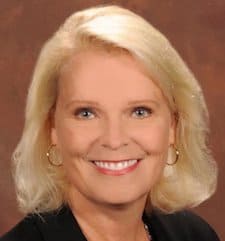
By Lee Ann Liska
Just before the holidays, I read a great article in the New York Times, “When the Surgeon Is a Mom.” I found it even more relevant on my second reading after the new year.
The article speaks to the tough choices female physicians make when they choose the field of surgery. All medical students have an opportunity to rotate through surgical specialties. When one chooses surgery for their career, they have made a decision that others may find tough to support. Female surgeons are warned they might not find a spouse if they are constantly in the OR. Friends caution that they will never have a personal life. Harvard Medical School reported in a recent survey that female surgeons face verbal discouragement, gender bias and a lack of balance with careers and motherhood.
A career in surgery, regardless of gender, often takes seven years of residency and additional years as a fellow, if specializing in specific surgical areas. These years, of course, cut right into average childbearing years for most women.
What resonated with me were the physical sacrifices that many female physicians make – long days on their feet, without adequate sleep and healthy nutritional choices. Some residents question whether the taxing physical demands have impacted their ability to bear children.
I have close female physician friends who settled on medical careers instead of surgery. Although they did not choose a surgical specialty, I know they face many of the same stresses in their professional life.
My dearest friend, an internist, administrator and medical school educator has a busy clinical load. She prepares for the upcoming week most Sundays, so her clinical preparation and educational work is completed in advance. She stops most days at McDonald’s and gets a Diet Coke. That’s her liquid intake for the day because she can’t take bathroom breaks during her busy clinics. Now at mid-career, she faces the additional stress of being the primary caregiver to aging family members.
Another dear friend, a rheumatologist, stepped back to part time to create more balance in her family’s life. This means evening and Saturday clinics to maintain her clinical FTE (full-time equivalent). As most of us know, part time really means full time with less pay, with plenty of work at home, catching up on electronic documentation and phone calls with patients. Have you ever looked at how productive part-time physicians are for their CFTE? They arguably work with greater efficiency than a traditional FTE.
Another colleague, a residency program director and excellent personal physician, recently had a child in her late forties. I’m certain that she and her husband, a fellow physician and surgeon, were questioned about their wisdom in having a child later in life after their other children were teenagers. She required an unexpected period of bedrest, further complicating her teaching and patient care schedule. This would be less of an issue for a physician just out of residency or fellowship; having a baby with a mature practice and career required doubling up on clinic time before and after maternity leave, and adding in night hours for administrative work. In spite of all of this, she says having her beautiful baby later in life has been her family’s greatest joy and provided her with balance and perspective, in both her life and career.
As a female in healthcare, I reflect on all of our sacrifices. I think back to the many softball, basketball and lacrosse games I missed. Like the women in the article, I, too, worried that having a child later in life might take away my own edge or make me less desirable for top executive roles. This was complicated further when my daughter was diagnosed with leukemia while I was in my first CEO position. Juggling a new job, with new cancer diagnoses for my daughter and both of my parents, was more stressful than I realized at the time. Living apart from my family for new jobs in different cities has been the ultimate sacrifice. However, I have been blessed with the most supportive husband and a now-healthy daughter who told me, when I was considering out of state offers, that she wasn’t used to seeing me at night during the week anyway, so what would be different? I assure myself that she meant this in the most supportive way.
Many of my female physician colleagues have developed physical ailments and some feel older than they look. My female surgical colleagues are tough, many have gained weight and rarely have time for self-care. My amazing friend, with the help of her family, has enjoyed delivering home-cooked food to her students and residents, each and every Thanksgiving, for over 20 years. She purposely schedules herself on the inpatient hospital service each year over the holidays to provide this for them.
With the cited average attrition at 25% for female surgeons, surpassing the national average turnover rate for nursing, I believe we should do whatever we can to recruit and retain female physicians. As healthcare administrators, we have the opportunity to listen carefully, support them, appoint them to important administrative roles, implement their recommendations and make their lives better.
I believe we owe this to their families, spouses, children, partners and parents, who have made incredible financial and personal sacrifices to help them succeed.
To all female physicians, whether you are a resident, fellow, surgeon, internist or administrator, thank you for your resilience and for paving the way for change for young women in the future.
About Lee Ann Liska
Lee Ann Liska is a CEO with over 30 years of integrated health systems management experience in successful provider organizations. With a background in hospital operations, physician practice management, and ambulatory services in academic and community health systems, she shares her expertise on leadership and patient experience at leeannliska.com.
The Editorial Team at Healthcare Business Today is made up of skilled healthcare writers and experts, led by our managing editor, Daniel Casciato, who has over 25 years of experience in healthcare writing. Since 1998, we have produced compelling and informative content for numerous publications, establishing ourselves as a trusted resource for health and wellness information. We offer readers access to fresh health, medicine, science, and technology developments and the latest in patient news, emphasizing how these developments affect our lives.








